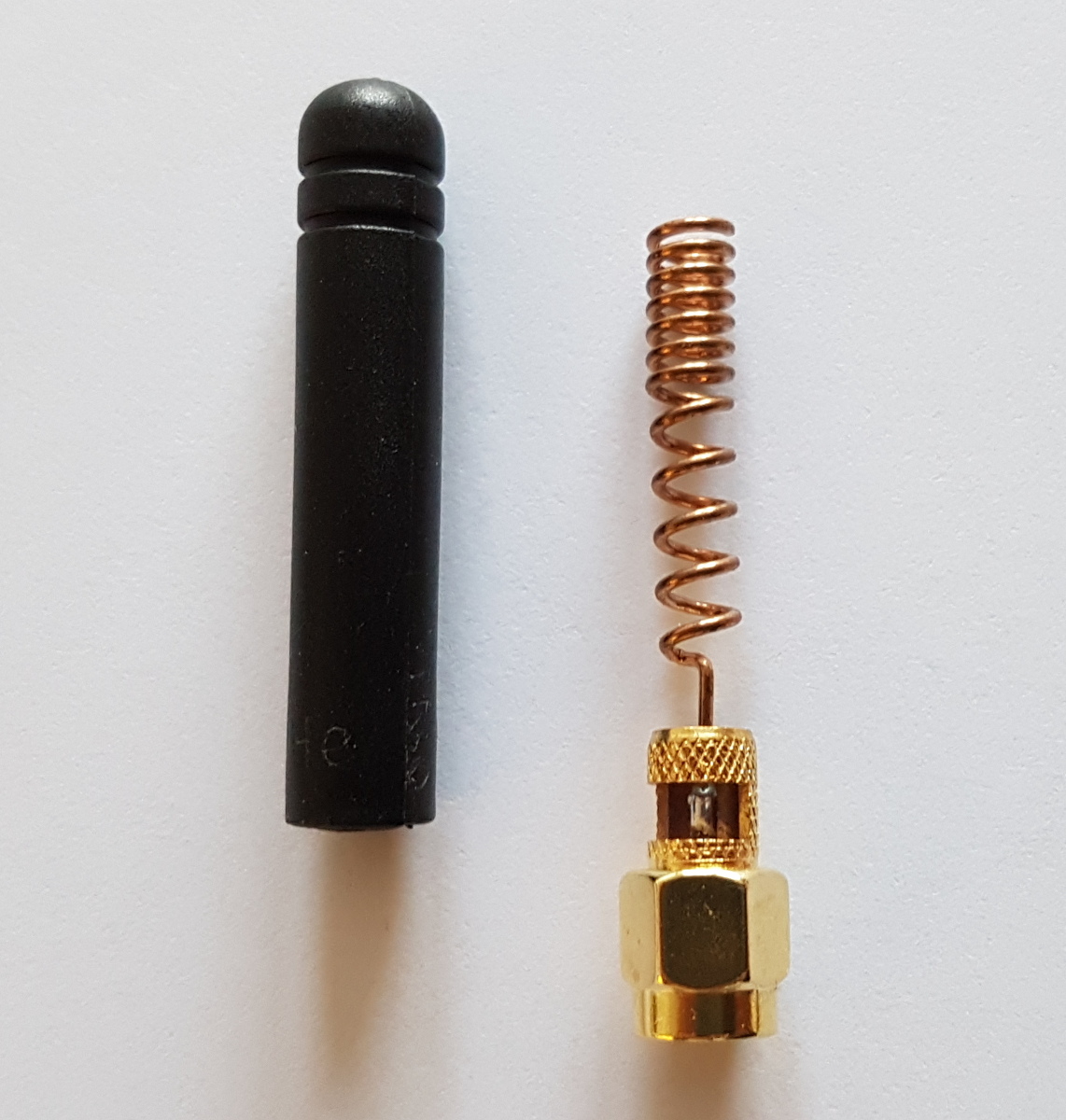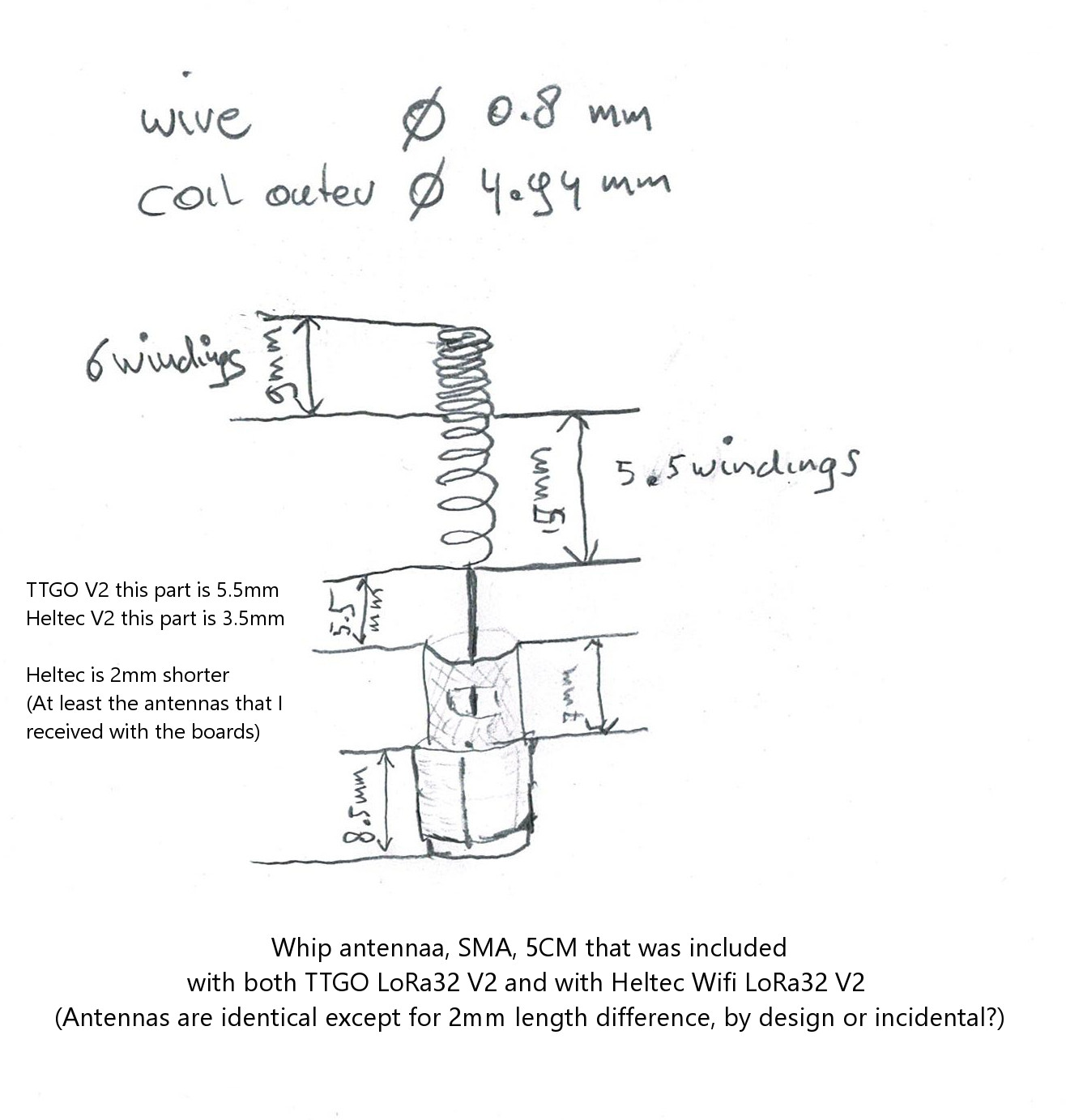Helical monopole whip antenna, 5cm, SMA
Included with both TTGO LoRa32 V2 and with Heltec Wifi LoRa32 V2
The version from Heltec was 2mm shorter (either by design or accidental).


Included with both TTGO LoRa32 V2 and with Heltec Wifi LoRa32 V2
The version from Heltec was 2mm shorter (either by design or accidental).

